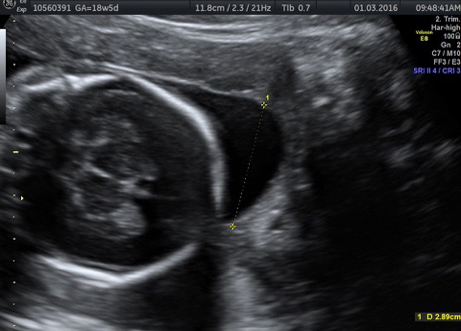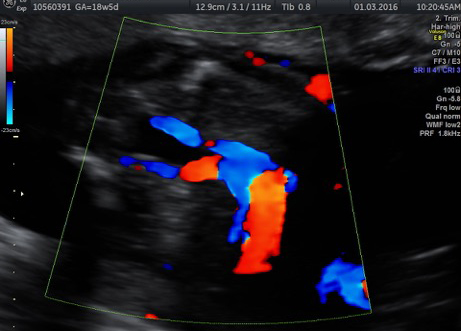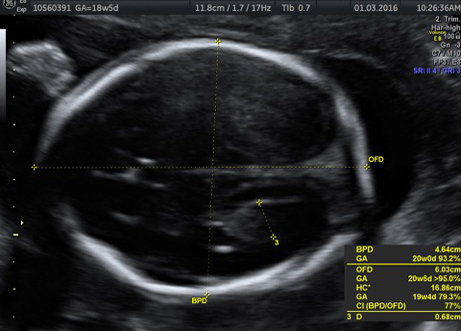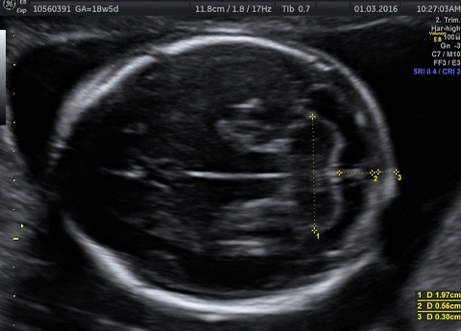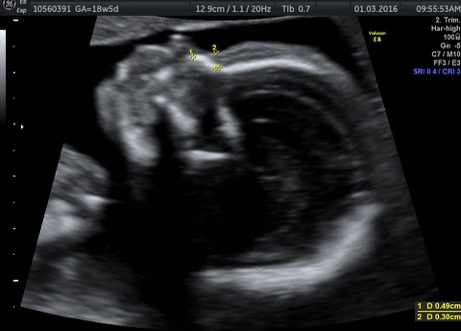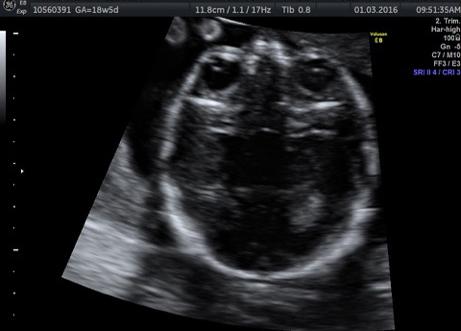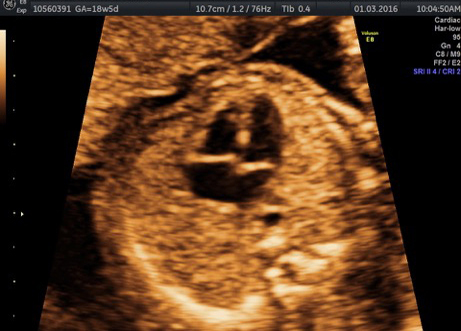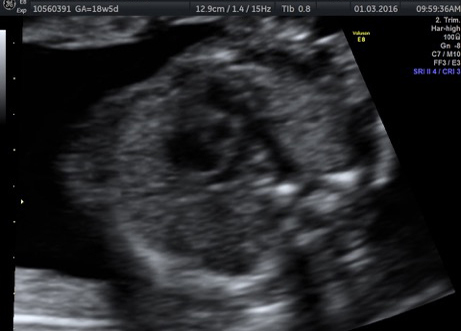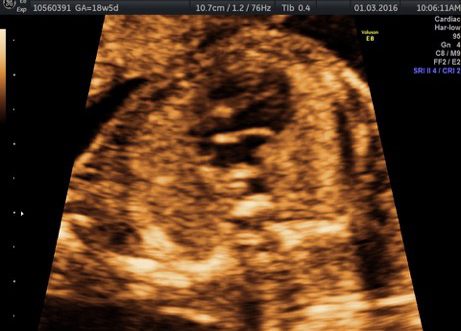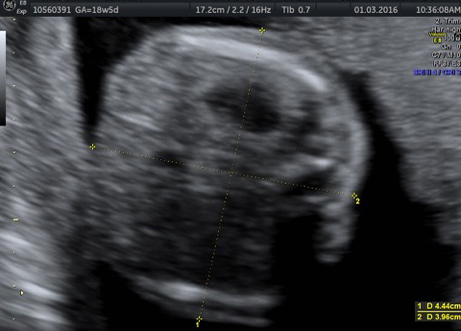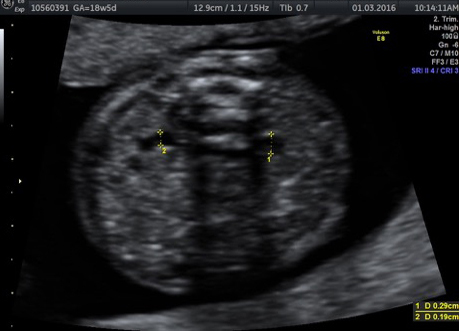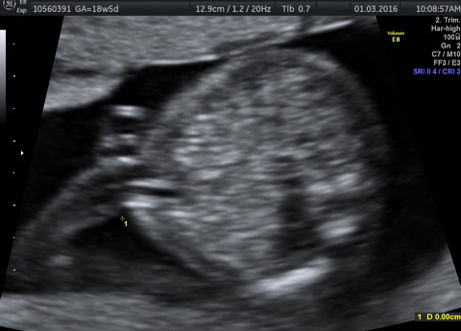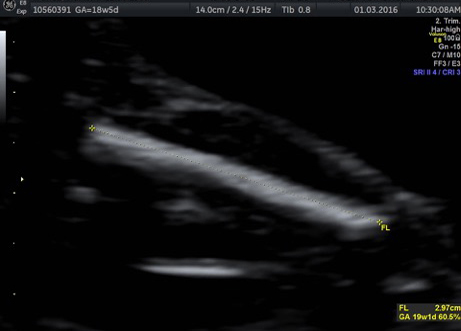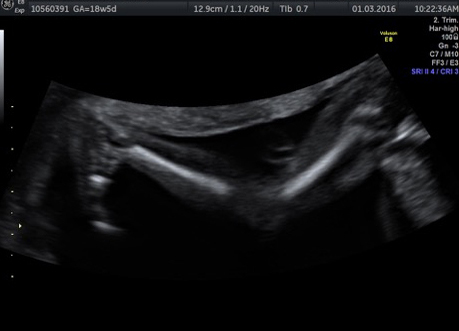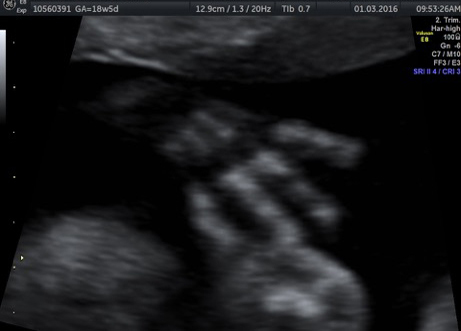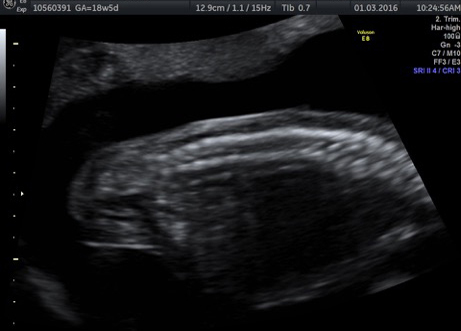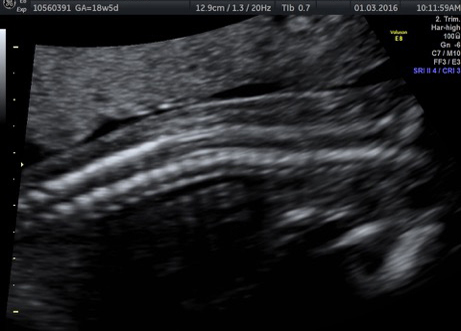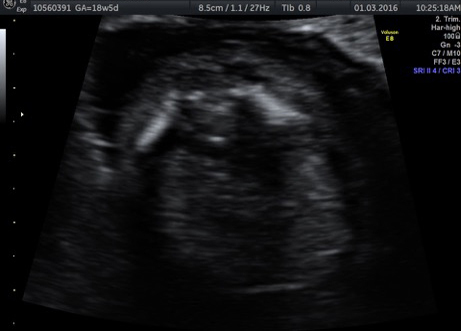This is a rare, yet serious, complication seen in approximately 1 percent of twins who share a common placenta (monochorionic) where one twin is normal and the other is severely malformed (generally missing the upper body, including the head, arms and heart). Due to the absence of a beating heart in the abnormal (acardiac) twin, blood flows from one twin (pump) to the other (acardiac) through what is believed to be backward flow within the surface vessels of the placenta. This increases demand on the heart of the pump twin, raising risk of heart failure, as well as producing too much urine and amniotic fluid. The larger the acardiac twin, the more serious the problem. If the condition is untreated, 50 percent to 75 percent of pump twins die. The chance of preterm labor also is high. The low oxygen levels within the transfused blood leads to a myriad of abnormalities within the acardiac twin. The complication rates for the TRAP pregnancy are high and include death of the pump twin (up to 75 percent risk) and preterm delivery due to high amniotic fluid volumes. Consequently, umbilical cord occlusion for protection of the pump twin may be performed, which generally yields an 80 percent success rate.
Initial diagnosis is often by routine prenatal ultrasound. Further tests may be necessary, including amniocentesis and fetal echocardiogram. Frequent ultrasounds may be needed to monitor the situation.
Fetal surgery treatment, which focuses on stopping blood flow to the acardiac twin, includes radiofrequency ablation (RFA).




